How to Mount a Projector Without Drilling: The Complete Guide
Do you want to mount your projector without drilling? It’s a great idea – not only is it more convenient, but it can also be safer for your equipment. In this guide, we’ll walk you through the process of mounting your projector without drilling, step by step. We’ll answer some common questions and provide some useful tips along the way. So whether you’re looking to install a new projector or just want to move your current one to a new location, read on for all the information you need!
How to Mount a Projector without Drilling?
You don’t need to be an expert in this. Just follow our complete guide and you’ll be up and running in no time!
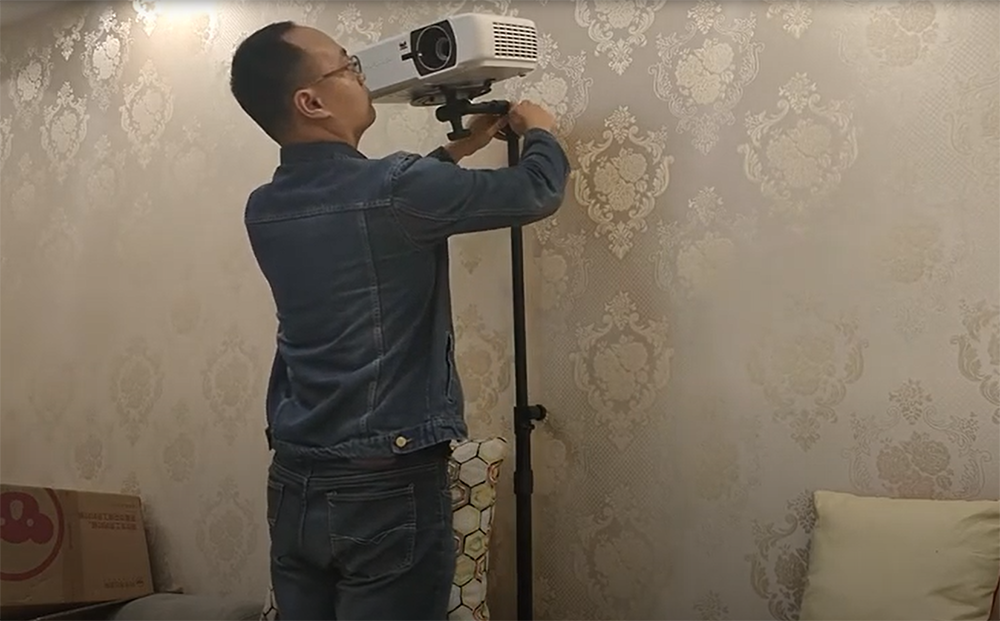
Projector Screen Stand
The first thing you’ll need is a projector screen stand. You can find these online or at your local hardware store. Make sure to get one that’s sturdy and will support the weight of your projector.
Next, you’ll need to gather some supplies. For this project you’ll need:
- Projector screen stand
- Level
- Tape measure
- Drill (optional)
- Screws (optional)
Now that you have all the supplies, it’s time to start mounting the projector!
L-Shaped wall hangers
If you don’t want to drill into your wall, L-shaped wall hangers are a great choice. You can find these at most hardware stores. All you need is a screwdriver and a level to install them.
First, mark on the wall where you want the projector to be mounted. Then, hold the L-shaped bracket up to the marks and use a pencil to trace around it. Next, use the screwdriver to remove the screws from the back of the bracket.
Now, position the bracket on the wall so that the tracing lines are lined up with the marks on the wall. Make sure the ruler is level before you screw it back in place.
Using Hardwall Hangers
One advantage of hardwall hangers is that they can support a lot of weight. This makes them ideal for heavier projectors. Another advantage is that they’re very easy to install. You simply need to drill four holes in the wall and then screw in the plate.
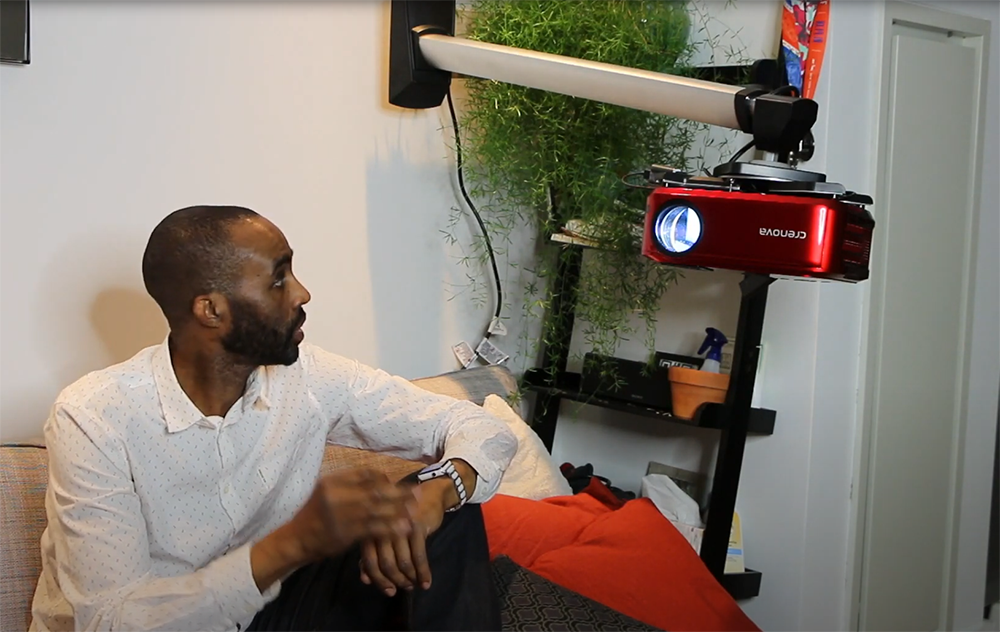
The main disadvantage of hardwall hangers is that they’re not very versatile. Once you’ve installed them, it can be difficult to adjust the position of the projector.
If you’re looking for a simple solution that can support a lot of weight, then hardwall hangers are a good option. Just keep in mind that they’re not very adjustable once they’re installed. [1]
Using Hanging Strips
Hanging strips are a popular option for mounting projectors without the need for drilling. All you need is a few strips of Velcro and some patience to get the perfect placement. Many people find that hanging strips are the best way to avoid damage to their walls. [2]
Here’s how to use hanging strips to mount your projector:
- Start by cleaning the area where you’ll be mounting the projector. This will help the strips adhere better.
- Next, measure the area and cut the strips to size.
- Remove the adhesive backing from the strips and place them on the wall.
- Press firmly so they stick, then wait a few minutes for them to set.
- Now it’s time to mount the projector. Line it up with the strips and press it into place.
- For extra security, you can use screws to secure the projector to the strips.
Brick Clamps
If you don’t want to damage your brick walls, you can use brick clamps. Brick clamps are designed to grip the bricks tightly without damaging them. You’ll need two brick clamps for this project.
To begin, choose a location on the wall where you want to install the projector. Then, put the brick clamp on the wall and tighten it until it’s snug. Next, take your projector and place it on the clamp. Finally, tighten the other clamp onto the projector so it’s secure.
Then, once you’re finished, you can remove the clamps without damaging your wall.
If you have a concrete wall, you can use concrete anchors to mount your projector. Concrete anchors are similar to brick clamps, but they’re designed for concrete walls. Just follow the same instructions as above, but use concrete anchors instead of brick clamps.
Command hooks
To mount your projector with command hooks, start by measuring the width and height of your projector. Then, mark where you want to place the hooks on the wall. Once you have your marks, remove the protective strip from the back of the hook and press it firmly onto the wall. Repeat this process for each hook until your projector is secure.
Now, take your projection screen and attach it to the hooks using zip ties or bungee cords. Make sure the screen is pulled tight so there are no wrinkles. And that’s it! You’re ready to start projecting.
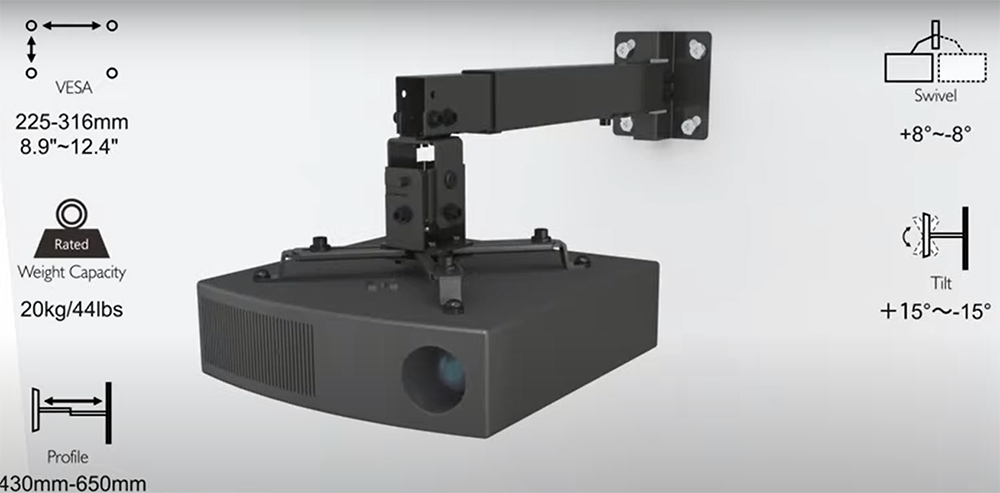
If you need to remove your projector or screen, simply release the zip ties or bungee cords and carefully remove the hooks from the wall. Again, make sure to follow the instructions on the package so you don’t damage your walls.
You can also mount your projector without drilling into your walls at all. There are special brackets that you can attach to the ceiling or a shelf that will hold your projector in place. These brackets are great if you’re renting and don’t want to damage your walls.
Where to mount the projector screen?
There are a few things to consider when answering this question. The first is the size of the room. If you have a small room, then you might want to consider mounting the projector screen on the ceiling. This will give you more space to work with and will also allow you to keep the projector out of the way.
Another thing to consider is where your projector is going to be located in relation to the screen. You want to make sure that there is a clear line of sight between the two so that you don’t have any issues with image quality.
Finally, you need to think about how you’re going to be using the projector. If you’re only going to be using it for movies and TV, then you can probably get away with mounting it on a wall. However, if you’re going to be using it for presentations or other business purposes, then you might want to consider getting a ceiling mount.
Ceiling mounts are great because they free up space on your desk or table and they also make it easier to adjust the projector’s angle. Wall mounts are also an option, but they can be more difficult to install and they might not offer as much adjustability.
If you decide to go with a wall mount, then make sure that you choose one that is specifically designed for projectors. These mounts will have special features that help to keep the projector in place and they will also have a built-in bubble level so that you can make sure that the projector is mounted correctly.
If you’re wall mounting, then you’ll need to find a stud in the wall and use that as your point of attachment. Once again, there are specialized mounts available, but you can also just use a standard picture frame hanger.
Once you have the mount in place, the next step is to attach the projector to it. This will vary depending on the type of mount that you’re using, but most mounts will use either screws or bolts.
Once the projector is securely in place, the final step is to connect all of the necessary cables. This includes both power and video. For video, you’ll need to connect either an HDMI or VGA cable from the projector to your computer or other video source.
For power, you’ll just need to plug the power cord into an outlet and then into the projector. Once everything is connected, you should be able to turn on your projector and start using it.
Things to know before mounting projector screen
Most projectors need room ventilation, so keep that in mind before purchasing one. If you’re mounting your projector on the ceiling, be sure there’s enough space around it for air to circulate. And if you’re mounting it on a wall, be sure to leave some space between the projector and the wall so that heat can dissipate.
Finally, think about how you want to control your projector. If you’re going to be using a remote, you’ll need to be able to access the projector’s control panel. That means you’ll either need to mount the projector within reach or choose a mount that allows you to tilt and swivel the projector.
Now that you know what to consider before mounting your projector, it’s time to choose the right mount. There are three main types of mounts: ceiling mounts, wall mounts, and table mounts.
Ceiling Mounts:
Ceiling mounts come in different sizes and styles, so be sure to choose one that’s compatible with your projector.
Wall Mounts:
Wall mounts are a great option if you’re limited on space. They’re also easy to install, and they allow you to tilt and swivel the projector so that you can get the perfect image. Just be sure to choose a mount that’s compatible with your projector’s weight and dimensions.
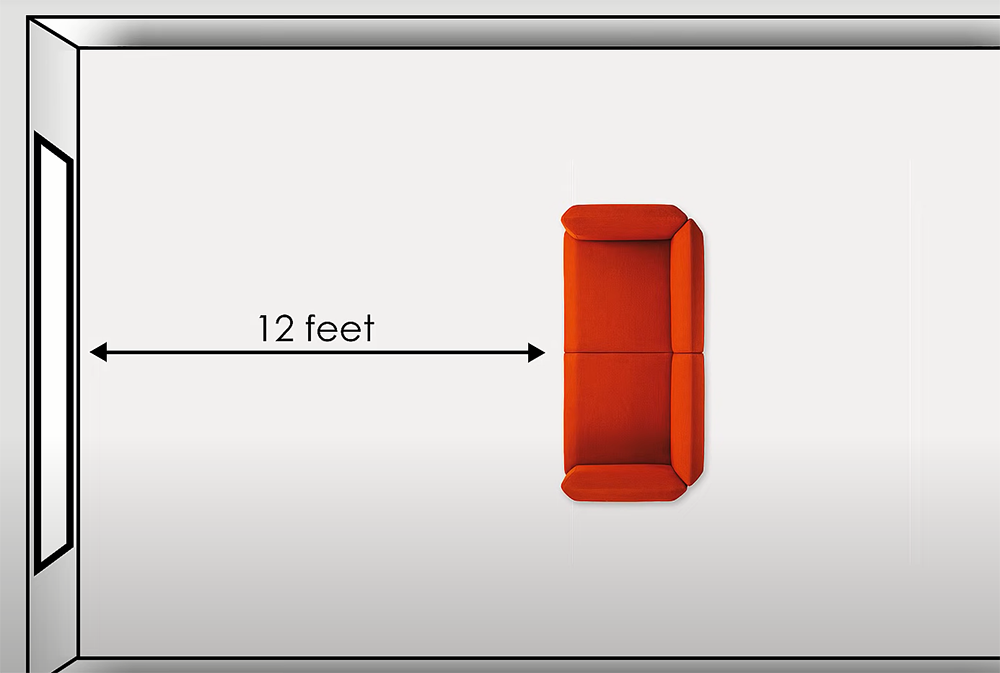
Table Mounts:
Table mounts are the simplest type of mount, and they’re perfect for projectors that weigh less than 15 pounds. All you need is a sturdy table or surface to put the mount on, and you’re good to go. Table mounts don’t offer any adjustability, so keep that in mind when choosing one.
Now that you know the different types of mounts, it’s time to choose the right one for your needs. Be sure to consider the weight and dimensions of your projector, as well as the type of surface you’ll be mounting it on. And if you’re not sure which mount to choose, don’t worry – we’ll help you out later in this article.
FAQ
How do you mount a projector screen without studs?
If you don’t have studs in the right spot, or if your projector is too heavy to mount on drywall alone, there are a few other options for mounting your projector screen. You can use a ceiling mount, which attaches to the joists in your ceiling, or a floor stand, which is great for projectors that are too heavy to mount on drywall.
Another option is to use speciality mounts that attach to the frame of your window or door. These mounts are usually made of metal and can support heavier projectors.
Finally, if you’re really set on not drilling into your wall at all, you can try using Command strips or velcro to attach your screen directly to the wall. This option is not recommended for heavier screens, but it might work for lighter projectors. [3]
Can you mount a projector into drywall?
Yes, you can mount a projector into drywall without drilling. There are a few ways to do this, but the most common is to use wall anchors. Wall anchors are small plastic or metal discs that expand when screws are inserted into them. This expansion creates a tight fit between the anchor and the wall, which can support up to 50 pounds.
To install wall anchors, first use a pencil to mark the spot on the wall where you want to insert the anchor. Then, use a drill to create a pilot hole at the marked spot. Next, insert the anchor into the pilot hole and screw it into place using a screwdriver. Once all of your anchors are in place, you can then hang your projector from them. [4]
If you’re looking for a more permanent solution, you can also screw the projector directly into the drywall. However, this will require drilling into the wall, so it’s not ideal if you’re renting your space or don’t want to damage the walls.
What can I use to hang my projector screen?
There are many ways that you can hang your projector screen without having to drill any holes. One option is to use command strips. Another option is to use Velcro. You can also purchase special brackets that allow you to mount the screen without drilling.
If you decide to use command strips, be sure you get the right size and sort for your screen. You must also follow the directions carefully to avoid harm to your walls.
With Velcro, you will need to find a spot on the wall that is strong enough to support the weight of the screen. The advantage of using Velcro is that it is easy to remove if you ever need to take down the screen.
Special brackets are a more permanent solution, but they can be more expensive. Make sure that you get the right size and type of bracket for your screen. Follow the instructions carefully in order to avoid damaging your projector or screen. [5]
How do you stick a projector screen to the wall?
There are a few ways that you can stick a projector screen to the wall without drilling. One way is to use double-sided tape. This will work if the wall is smooth and flat. If the surface isn’t perfectly even, you might need to use something like Command strips or velcro dots. Another option is to hang the screen from the ceiling using hooks or an overhead projector mount.
If you’re looking for a semi-permanent solution, you could also try mounting the screen to a piece of plywood or MDF that’s been painted black. This way, you can just prop it up against the wall when you’re ready to use it. When you’re done, just fold it up and put it away.
Useful Video: Mount Projector without drilling with IKEA LACK shelf unit
Conclusion
There are a variety of methods to mount a projector without drilling. Choose the option that is best for you based on your budget and needs.
You don’t need to drill a single hole with these methods, as long as you have some time and simple materials. So get creative and enjoy your new home theater setup. Thanks for reading!
References:
- https://technoqia.com/how-to-mount-a-projector-screen-without-drilling-wall/
- https://pointerclicker.com/how-to-mount-a-projector-screen-without-drilling/
- https://www.avsforum.com/threads/mounting-projector-without-studs.2983610/
- https://projectorninja.com/how-to-mount-a-fixed-projector-screen-on-drywall/
- https://glintylab.com/how-to-hang-projector-screen-from-ceiling/





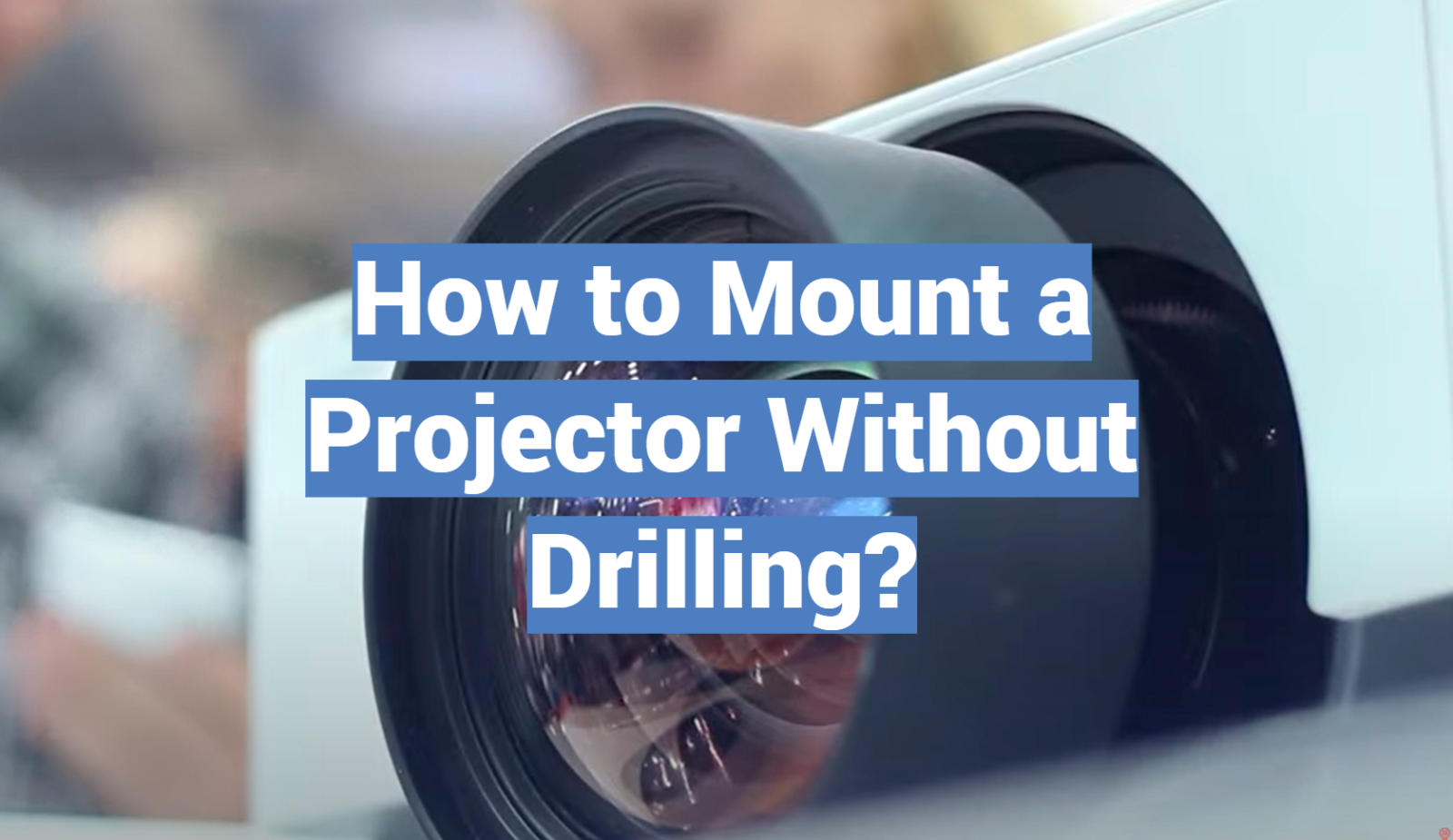
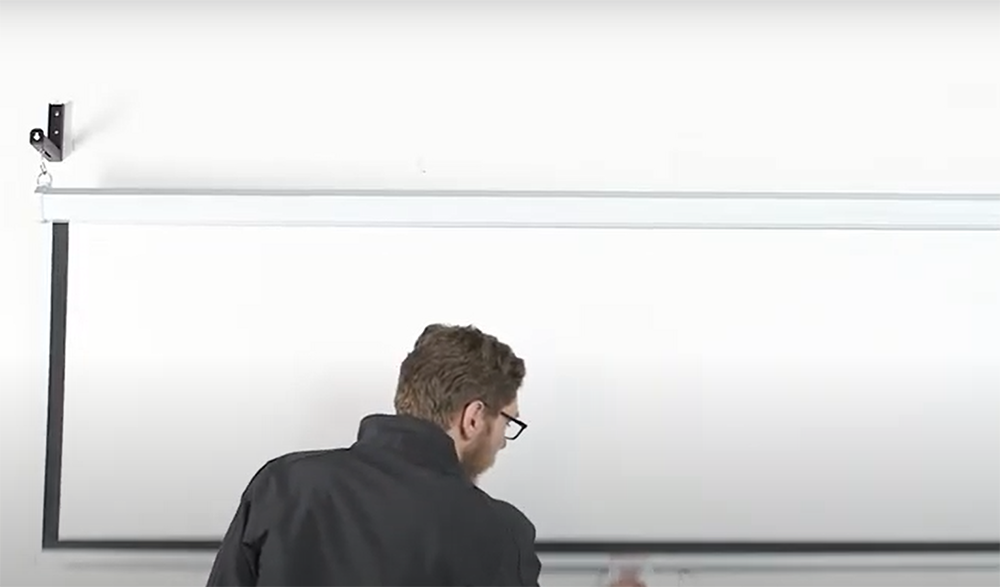
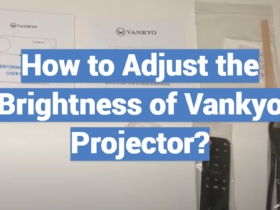
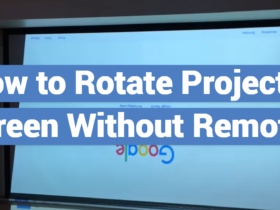


Leave a Review